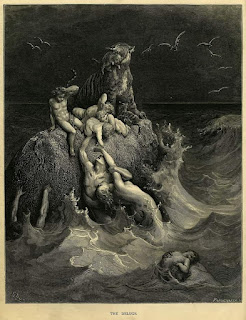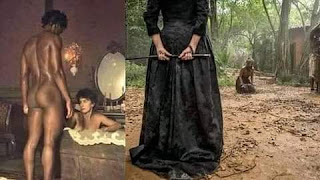Deluge Myths
Deluge Myths
High water, gully washer, toad strangler, God willing and the creek don’t rise. These are all terms for a universal weather phenomenon- floods. Even in ancient times, floods were a key part of life. The Nile floods were so important to ancient Egypt they had a god for it- Hapi. In that same vein, there are similar stories about a great flood in most known mythologies. There are enough similarities that researchers believe that these stories could come from a single root. The field of geomythology is the intersection between mythology and geology, and scientists have begun drawing parallels to the multiple “deluge myths”.
The most commonly known story is that of Noah, which appears in the Torah, the Christian Bible and the Quran. God became angry with the people of earth and sent a flood to destroy them. He commanded Noah to build an ark, or boat, large enough for his family and two of each animal. After forty days and forty nights, the ark landed on top of a mountain and the earth was repopulated from the animals and people on it.
However, this story is strikingly similar to an older one that appears in The Epic of Gilgamesh. This Sumerian tale is one of the earliest examples of literature and the oldest version is dated to circa 2000 BCE. In it, Gilgamesh in his search for immortality meets a man named Utnapishtim, who’s story sounds suspiciously like Noah’s. Utnapishtim is instructed by the god Ea, the god of wisdom and water, to build a boat large enough for his family, animals and plants. Then the rains began and a flood covered the earth killing all living things not on the boat. Like the story of Noah, Utnapishtim also sent out birds to see if there was any dry land- a dove returned exhausted, but later the raven did not come back letting Utnapishtim know there was a place for it to land. Both these details are repeated in the Noah story (Genesis 8:6-12). Utnapishtim was granted immortality from Ea and became the progenitor of the human race. Utnapishtim isn’t the only hero of a flood narrative from the near east. Similar stories are told of Atra-Hasis, in an 18th-century BCE Akkadian epic, and Ziusudra, in the Eridu Genesis, a text from the Old Babylonian Empire in 17th-century BCE.
One could dismiss this as coincidence as the ancient Israelites were from the same general region as the Sumerians. In fact, most accounts say that Abraham, the patriarch of the nation, was originally from Ur, a Sumerian city. It’s possible that the stories he carried from Sumerian Ur made it into the Torah and thus the Bible and Quran through his retellings with some notable name changes. However, there are flood stories from farther afield.
The Greeks also have a deluge myth. In their version, Zeus was displeased with the human race and instructed Deucalion to build an ark to save himself and his wife, Pyrrha. After a rain of nine days, the ark landed on the top of a mountain, in this case Mount Parnassus. The Greeks do add an end run to the human population being replenished by one family by having Deucalion and Pyrrha toss stones over their shoulders to make new people. Thank you, Greeks, for not having all of us built on incest.
As we travel east, there are deluge myths with striking similarities from Hindu, Buddhist and Chinese traditions. In them, a god or spirit instructs a man to build or find something to serve as a boat to protect the family from the floods. They end up lodged on top of a mountain, and then have to populate the human race- sometimes through magical means and sometimes the old fashioned way. There are also similar stories in polynesian traditions. In Tahitian myth, the sea god became angry when a fisherman caught hooks in his hair and so sent floods that covered everything but the tallest mountains. This theme is repeated in Maori and Hawaiian myth, and each of these have a survivor figure- Paikea and Nu’u respectively. However, there is thought the Maori myth was augmented by someone who had missionary influence to make Paikea sound more like Noah.
Traveling west from the Middle East, we find similar myths in North and Central America. The Ojibwe/Chippewa Tribe tell the story of Waynaboozhoo and the Great Flood. The Great Spirit sent a great flood and the only survivor was Waynaboozhoo, who then went through trials to rebuild the earth. In the Aztec deluge myth, the people who were not saved by a benevolent god were turned into fish. It takes a sad turn when the surviving family eats one of the people fish despite being told not to, and are turned into dogs.
Where are all these flood stories coming from? There are several theories. Geologists have theorized that these stories are a memory of a great flood about 7,000 years ago at the end of the last Ice Age. The glaciers that covered Europe began to melt and ran into the Mediterranean Sea. The force of the water would have been extremely fast moving and is theorized to have the force of 200 times Niagara Falls. That would definitely be an event that would lodge itself in the collective memory. Other theories posit a tsunami from the Thera eruption, which is thought to be the origin of the myth of Atlantis. In the end, we will never know for sure.




Comments
Post a Comment